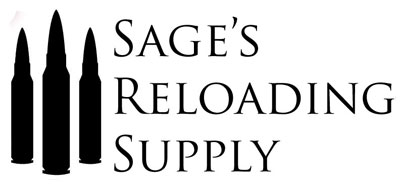I've been inspired to address case sizing.
The inspiration come from "all of the top Bench Rest guys FL size every time" . Well they probably do , but they also have a FL sizer , dedicated shell holder if not cut and fitted as part of the ram on a roller bearing dial indicated press . The die is cut and finished to something most likely -.0015 all over , with a -.0025 on the on the neck from actual chamber dimensions and they fire a whole match with 1 case ...... .
In the real world a first cut chamber can be as much .002 over the standard drawing in every dimension and under by .0015 . The ideal is .003 under but a first cut die might be only .002 under standard and only.003 on the neck while a last cut dia might leave brass as much as .004 under standard all over and size the neck down .006 .
The possibility then is that a First cut die and a last cut chamber could come together and be somewhere perfect minimum sizing and "why won't the bolt close on 1/3 of my loads?". At the other extreme we get the short case life , frequent head separations , and flat primers .
Handloaders with some time in often practice bump sizing also referred to as short sizing , not to be confused with neck sizing in a FL sizer . They first discover when looking for that next -.5" that they have a long or fat body , long or fat shoulder , or even a short neck . Next they find that the die isn't exactly the same shape as the chamber , generally when they start buying 1x or have 2-3 arms in the same cartridge.
Spring back . Annealing will minimize this but it's a thing that happens even to very soft , thin brass . Here's where the guys that FL every time be cause the bench rest do say "I don't worry about it. I throw the brass after 3 cycles because it's going to crack necks , have head separations, or loose pockets after that anyway.". Typically this is a result of running top loads and having the fat chamber and skinny dies .
This all relates to new arms .
Make no mistake there are arm and cartilage combinations that are just really hard on cases , 303 Britt and Enfields come to mind immediately. Here is also a classic example of the chamber not being the same shape as the die . Many have sharp high angle shoulders vs the 30-30 like shallow angle .
When we get into older arms we sometimes find that wear takes a toll . In particular in the neck area and down to the shoulder l/body junction. I had an 06' that was about .001 off the minimum Go Head Space gauge , up to .004 is generally allowed it had a little throat erosion but on demand it would put 5 150 gr SPBT inside a half dollar at 100 yd . The shoulder measured .440 . New brass and factory ammo had literal wiggle room in the chamber, a fired had a .330 neck OD . Factory and full length ammo shot about 8" at 100 . This just 1 of a dozen or more examples I've had in my possession over the last 30 years . There was a 7.62◊39 that in the course of a single firing cycle the neck moved .1 inch in dia , never mind the body . Of course that one is closer 8 mm than 7.62 . So when I champion neck sizing or leave .08-.1 of an 06' or similar neck unsized in an FL die it's experience not me say this is best .
Minimum sizing is the best for brass life .
If you need to FL size like another 06' I had needed, that's fine .
In many instances neck sizing works very well and it doesn't always need to be done every 3-4 cycles. Make notes and see where it leads you .
As for the tools obviously a FL die sizes everything that goes inside die .
Neck dies only do the neck .
Then you have the collet sizer that as I understand it sizes a portion of body , takes care of the shoulder length , and has a mandrel to limit the ID sizing in the neck .
Redding makes a body die presumably it sizes only the body .
Then there are bushing neck sizing dies . They allow one to not only only size the neck alone but to select dia for your specific needs . In my case I use one for a 6.5 to get the neck sized with a .270 ID to accommodate the .272 cast bullets.
I think I've covered all of the ground , but like all things I don't know it all and I am open to real applied experience and knowledge.







 Reply With Quote
Reply With Quote
